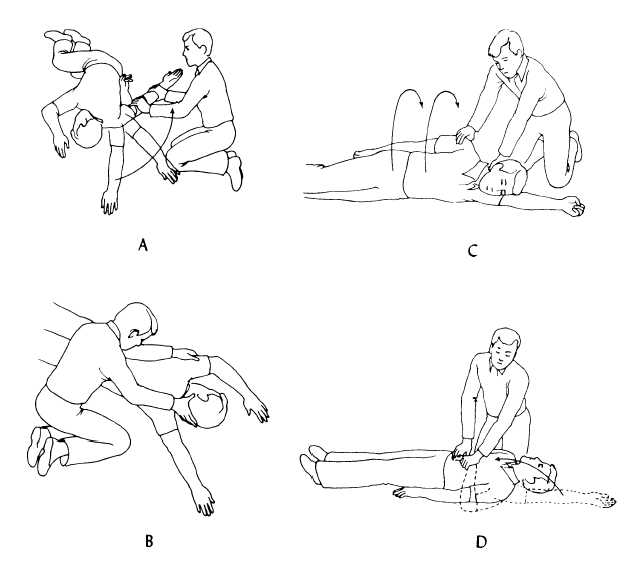Partial Airway Obstruction
The signs of partial airway obstruction include unusual breath sounds, skin discoloration (cyanosis), or changes in breathing pattern. The conscious patient will usually make clutching motions toward the neck, even when the obstruction dews not prevent speech. For the conscious patient with an apparent partial obstruction, encourage him or her to cough. NOTE: In cases where the patient has an apparent partial obstruction but cannot cough, begin to treat the patient as if this were a complete obstruction. This also applies to patients who are cyanotic.

Figure 4-2.—Repositioning the victim of spinal injuries.
Complete Airway Obstruction
The conscious patient will attempt to speak but will be unable to do so, nor will he or she be able to cough. Usually, the patient will display the universal distress signal for choking by clutching at the neck. The unconscious patient with a complete airway obstruction exhibits none of the usual signs of breathing: rise and fall of the chest and air exchange through the nose and/or mouth. A complete blockage is also indicated if a perfectly executed attempt to perform artificial ventilation fails to instill air into the lungs.
